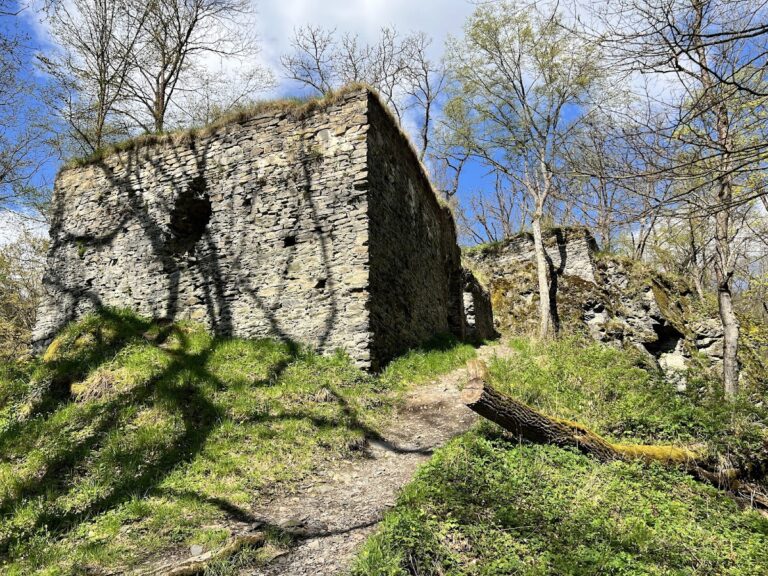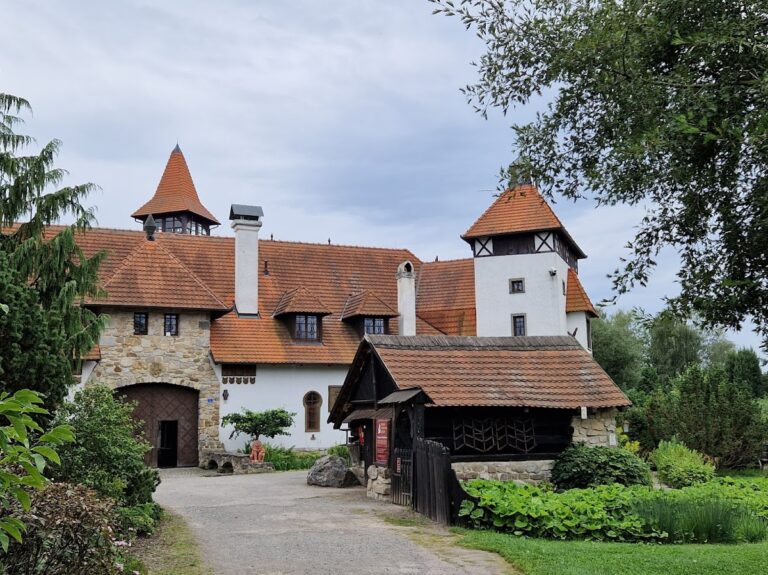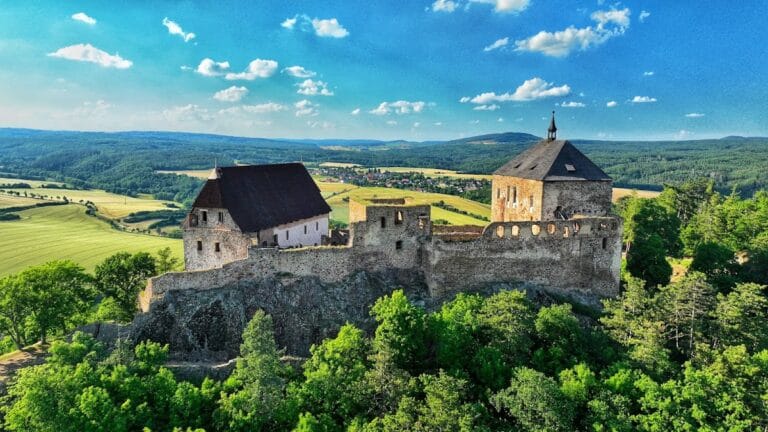Tetín Castle: A Medieval Bohemian Fortress in Czechia
Visitor Information
Google Rating: 4.7
Popularity: Medium
Google Maps: View on Google Maps
Official Website: www.tetin.cz
Country: Czechia
Civilization: Unclassified
Remains: Military
History
Tetín Castle stands near the village of Tetín, within the territory of modern-day Czechia. It was established by the medieval Bohemian civilization and dates back to the mid-13th century, constructed atop the site of an earlier fortified settlement known as a hradistě.
The castle’s origins are probably linked to King Přemysl Otakar II, a prominent Czech monarch of that era. The earliest existing written record from 1288 mentions Hynek of Lichtenburk as the castle’s burgrave, or governor. Alongside Dětřich Švihovský, Hynek was involved in plundering church lands belonging to a bishop, an event supported by archaeological signs suggesting the castle experienced a violent takeover. During this period, the castle held administrative importance and was connected to both royal authority and local religious institutions.
Under King Václav II, Tetín Castle served as the lifestyle center for royal huntsmen. The king granted the office of the royal huntsman and the rights to collect forest revenues to the nearby Chotěšov monastery. This arrangement helped support local churches, while villagers maintained their customary right to gather timber for building. During Václav II’s reign, the castle was significantly rebuilt to house illegitimate sons of the Přemyslid dynasty who required noble estates. One of these residents, Štěpán of Tetín, held the influential roles of land notary and highest scribe of the Kingdom of Bohemia, and might have succeeded as burgrave around the time King John of Luxembourg began his rule.
Later in the 14th century, the castle passed into the possession of Charles IV, the Holy Roman Emperor and King of Bohemia. Charles IV may have referenced this estate in his proposed legal code called Majestas Carolina and incorporated Tetín into the domain centered on the famous Karlštejn Castle. After this transfer, Tetín Castle gradually lost its strategic and residential functions. It was ultimately abandoned during the second half of the 14th century, marking the end of its active use as a royal or noble residence. Today, Tetín’s historic ruins remain protected as a cultural monument within the Czech Republic.
Remains
The site of Tetín Castle occupies a rocky outcrop at about 270 meters above sea level, featuring a roughly trapezoidal floor plan characteristic of its original construction in the mid-1200s. The earliest castle lacked a central tower but had defensible structures around its perimeter. Later maps from the 19th century show a large pile of rubble that is thought to have been the remnants of a round bergfried, a type of strong defensive tower common in medieval castles. A square projection in the north corner may also be the remains of a tower, providing further evidence of fortified buildings lining the edges.
On the northeast side of the castle stood a large palace with three main rooms, forming the primary residential space. By the late 13th century, the castle’s footprint expanded to include a lower, triangular area to the west, which featured a massive gate tower controlling access into the complex. This tower was connected to a long palace wing inside the original core by a bridge, and the main gate was defended by a portcullis—a heavy grille fixed to secure entrances.
The defensive walls surrounding the lower castle employed opus spicatum, a distinctive masonry technique where bricks or stones are laid in a herringbone pattern. Above the moat, a barbican—a fortified outpost or gateway—likely strengthened the castle’s defenses further.
Today, only parts of the square gate tower and fragments of the younger palace wing’s walls remain visible. Much of the original structure was destroyed during limestone quarrying in the 19th century, including portions of the eastern section. Despite these losses, the surviving ruins still reveal details of the castle’s complex layout and construction phases, preserving its legacy as a fortified medieval residence.










